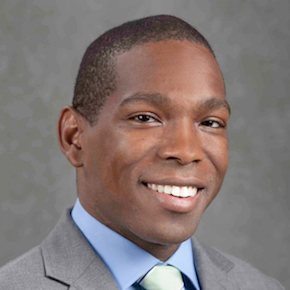Monthly Archives: September 2018
Sep 17, 2018 Richard MoorheadLegal Profession
The fascinating case made by Yuval Feldman’s recent book is that most wrongdoing is done by good people who, too frequently, allow themselves to do wrong. We are egocentric; our brain works hard to promote self-interest whilst protecting the self-image that we are morally upright. And it does so quietly (my word, not Feldman’s); much of the decision-making is done subconsciously, intuitively – albeit sometimes, importantly, with glimmers of recognition.
Feldman classifies us into three types: deliberate wrongdoers; situational wrong doers, subject to this quiet egocentricity; and the genuinely good. Even the latter are prone to moral blindspots. Concerned about the prevalence of the last two groups, Feldman makes a strong case for taking situational ethics more seriously. This allows a psychological engagement with sociological questions of structure and agency. Situational ethics sees anxieties about bad apples and bad barrels as being better understood as a concern with bad decisions; we are located in webs of design and accident. What Feldman wants is for regulatory design and jurisprudence to take bad barrels and bad decisions more seriously. The normative judgements that drive ex post punishment as a regulatory strategy are superseded by seeking improvements in behaviour before wrongs can manifest. Intentionality, he suggests, is “outdated.” (P. 40.) Continue reading "Good People and the Ethics of Quiet Egocentricity"
Sep 14, 2018 Kenneth W. SimonsTorts
In this book, legal scholar and philosopher John Oberdiek offers an elegantly written, meticulously argued, and highly original account of when it is morally permissible to impose mortal risks on others. Tort scholars and theorists have long examined the permissibility of risky conduct, but, as Oberdiek observes, their efforts have usually focused more on interpreting legal doctrine than on the more fundamental question of the morality of risking. And insofar as scholars have evaluated this more fundamental question, they have often provided a simplistic and normatively questionable answer: cost-benefit analysis or utilitarian balancing is the only realistic and sensible way to distinguish legally permissible from legally impermissible risky conduct. This answer is also reflected in the most common characterization of the famous (or infamous) Learned Hand test of negligence: an actor is negligent if but only if (i) she failed to take a precaution and (ii) the burdens or costs of taking that precaution outweighed the precaution’s benefits (in reducing the risks of harm. At the same time, Oberdiek notes, moral philosophers have paid relatively little attention to the moral evaluation of risky conduct. in part because they usually assume the existence of idealized conditions under which the outcomes of a person’s actions are certain. Turning the trolley (or shoving a fat person into its path) will cause the death of one; not turning it will permit the death of five. Framing an innocent person will prevent a mob from killing more people. And so on.
In contrast with these unpersuasive or overly stylized approaches, Oberdiek’s book is a very welcome and invigorating breath of fresh air. Oberdiek offers a rigorous, nuanced, and novel account of the morality of risking, an account that seriously engages with the difficult challenge of explicating the concepts of risk, a right against risk, and the permissible level of risk under contractarian principles. Although some aspects of the analysis might be questioned, this philosophically sophisticated work should provoke renewed attention to a terribly important and unduly neglected topic. Continue reading "The Morality of Risking"
Sep 13, 2018 Anders WalkerLegal History
In Locking Up Our Own: Crime and Punishment in Black America, James Forman, Jr. shows how African American voters in Washington DC lobbied for longer prison sentences and more police officers. Forman’s argument complicates the story told by Michelle Alexander in The New Jim Crow: Mass Incarceration in the Age of Colorblindness, which is that white conservatives increased prison sentences and police in order to impose a new system of racial control on black Americans, all under the rubric of a War on Drugs. Underlying Alexander’s argument is the claim that African Americans were not in fact the primary consumers of drugs in the United States; whites were, though they suffered comparatively lower rates of incarceration and arrest.
Forman concedes Alexander’s point about white drug use, but argues that African American leaders played a significant role in the rise of mass incarceration. As he tells it, problems with narcotics coincided with a proliferation of firearms. Guns became the weapon of choice for drug distributors, who turned to crime out of economic necessity and used extreme violence to eliminate competitors, increase market share, and create an illicit, street level, drug market. This market driven violence, maintains Forman, became so intolerable that African American majorities voted for higher prison sentences and more police, effectively joining white conservatives in what Alexander has termed “mass incarceration.” Rather than a coordinated, right wing plot, however, Forman suggests that the story in Washington was a tale of incremental choices by desperate officials who implemented radical policies that had unanticipated effects. Continue reading "Did Black Baptists Join the War on Drugs?"
Sep 12, 2018 Daniel ShaviroTax Law
How much profit-shifting, from high-tax to low-tax countries, do multinational companies (MNCs) engage in? The question is hard to answer, for both theoretical and empirical reasons. The “true” geographical source of profits earned by MNCs on their global production and sales activities would often be theoretically ambiguous even if their actions and decisions were completely transparent. In addition, however, not only is there a large gulf between what they know and what we (or the tax authorities) know, but relevant economic data may either be unavailable or reflect formalistic reporting conventions.
A recent literature review by Dhammika Dharmapala reports that, in the “more recent empirical literature, which uses new and richer sources of data, the estimated magnitude of [profit-shifting] is typically much smaller than that found in earlier studies.” James R. Hines goes further, asserting that profit-shifting is “notably small in magnitude,” and that any public (or even scholarly) impressions to the contrary merely reflect journalistically-driven over-excitement in response to a few “distasteful anecdotes of crass tax avoidance.”
But what if such conclusions—which are not, however, universal —reflect data limitations? An important new National Bureau of Research Working Paper by Thomas Tørsløv, Ludvig Wier, and Gabriel Zucman (“Zucman et al”) makes novel use of macroeconomic data, comparing the wages and profits of MNCs’ foreign affiliates to those of local companies, both in tax havens and high-tax countries, to reach very different conclusions. Zucman et al find that forty percent of MNC profits are shifted to low-tax countries in a typical year, and that this estimate is conservative given the likely impact of statistical gaps. (P. 26.) Continue reading "How Inevitable Is Corporate Tax Competition?"
Sep 11, 2018 Nicole Stelle GarnettProperty
Maureen E. Brady,
The Forgotten History of Metes and Bounds, 128
Yale L.J. __ (forthcoming, 2019), available at
SSRN.
A decade and a half ago, as a neophyte property teacher, I read Andro Linklater’s history of the surveying and distribution of land west of the Appalachian Mountains. The central animating principle in the book—Measuring America: How the United States was Shaped by the Greatest Land Sale in History (2002)—was simple, and seemingly self-evident: When it comes to surveying and selling land, straight lines are better than squiggly ones.
(I was less convinced by Linklater’s side effort to convince readers that the metric system is infinitely better than the imperial system, although his arguments on this front brought back fond memories of my elementary school teachers’ assurances that the United States would adopt the metric system by the year 2000.)
In the years since the publication of Linklater’s book, economists have amassed substantial evidence supporting his argument that the “grid” system of land demarcation employed by the federal government in the Northwest Territories and (for the most part) thereafter in the distribution of western lands is far more efficient than the older metes-and-bounds system used in the original thirteen colonies and other early states such as Tennessee and Kentucky. Continue reading "Metes and Bounds: A Revisionist History"
Sep 10, 2018 Jaya Ramji-NogalesLexImmigration
Under the Trump administration, each week brings a new attack on due process and on substantive protections for migrants. Sacred cows such as Temporary Protected Status for Salvadorans, which had been extended by Democratic and Republican administrations alike for the past two decades, are dispatched with alacrity. Attorney General Sessions appears intent on destroying the immigration adjudication system, demanding that immigration judges meet unrealistic case completion goals and reversal rates while limiting the resources available to the system. Migrants’ rights are a constant source of litigation, from highly anticipated Supreme Court judgments to battles fought through amicus briefs before the Attorney General.
Beyond the momentary relief of deft political satire, a comparative glimpse across the pond can provide helpful perspective on the situation at home. Vladislava Stoyanova’s forthcoming article reminds us that we are not the only nation facing populist movements that “exploit public anxieties over migration” in order to “curb[] immigration and restrict the rights of migrants.” Her rigorous and painstaking analysis of the European Court of Human Rights (ECtHR) decisions prompts analysis of larger philosophical questions about law’s paradoxical approach to migrants’ rights and offers a provocative new concept: populist judicial reasoning. Continue reading "Populist Judicial Reasoning"
Sep 7, 2018 Fred O. Smith, Jr.Courts Law
Aaron Tang,
Rethinking Political Power in Judicial Review, __
Cal. L. Rev. __, (forthcoming 2019), available at
SSRN.
Courts and commentators have long debated the proper role of judicial review in democracies, particularly the question of how deferential courts should be when determining whether to uphold legislation. Much constitutional adjudication is devoted to understanding phrases that are reasonably susceptible to various meanings, even when history and precedent are consulted. In those situations, how certain should jurists be that their interpretations of constitutional phrases or terms are correct before they vote to invalidate democratically enacted legislation?
At least two facts drive and complicate the answer to this question. First, we live in a land where the people purportedly govern themselves; there must be some limitations on the ability of unelected judges to invalidate legislation. Second, we live in a land where history has taught that, when left unchecked, elected officials sometimes trample individual rights and subjugate politically powerless minorities with impunity. Attentive to both of these facts, adherents of the political process theory of judicial review advocate for a judiciary that is deferential to politically accountable branches unless (1) the law undermines the capacity of citizens to make political change or (2) the law burdens a politically unpopular group. Under John Hart Ely’s traditional understanding of political process theory, when a law “clog[s] the channels of political change,” or targets a politically powerless group, this should increase courts’ readiness to invalidate a potentially unconstitutional law. Continue reading "The Politically Powerful and Judicial Review"
Sep 6, 2018 Dara E. PurvisFamily Law
Meghan Boone,
Lactation Law, ___
Calif. L. Rev. ___ (forthcoming 2018), available at
SSRN.
If one reason that women have been held back in the workforce is difficulty reconciling caregiving responsibilities and work-related duties, then one obvious method of reform should be to require employers to accommodate caregiving, particularly those forms of caregiving that are disproportionately or exclusively fulfilled by women. For example, because a typical full-time work schedule is not conducive to a new mother’s schedule of breastfeeding or pumping breast milk, many women are forced to prioritize work over breastfeeding. In response, both state and federal laws require employers of a certain size to accommodate new mothers returning from maternity leave by providing them with breaks and a suitably private area in the workplace to pump breast milk, allowing them to return to work and continue to feed their babies breast milk. Surely a win for feminism and facilitating women’s employment choices, right?
In her forthcoming article Lactation Law, Meghan Boone answers no, at least as such statutes are currently written. From the opening paragraphs, she poses a startlingly counterintuitive example of a Maine teacher whose child was stillborn. In the following days, she began lactating, an understandably traumatic process for someone mourning a stillbirth. As she grieved, she learned of nonprofit organizations that collected donated breast milk and distributed it to babies who would otherwise not be fed breast milk and decided to participate. The school where she worked, however, refused to accommodate her pumping breast milk because the Maine statute that required employers to accommodate lactation only applied to mothers nursing or pumping milk for their own children. Because the teacher’s breast milk would be donated to other babies, the school was not required to accommodate her desire to pump breast milk while she was at work. Continue reading "Are Breastfeeding Protections Anti-Feminist?"
Sep 5, 2018 Barbara LevenbookJurisprudence
Although in most states and in the federal system, the law’s answer to the title question is “yes,” Youngjae Lee’s answer—with a qualification it will take the rest of this jot to explain—is “no.” To be more precise, his answer, surprisingly, is that it depends on the issue that is liable to disagreement. Making certain assumptions, Lee argues that unanimity is the best rule to adopt for juries reaching decisions about empirical facts in criminal cases. In these circumstances, requiring unanimity among jurors is both most faithful to the beyond-the-reasonable-doubt requirement for conviction and most faithful to the justification of this requirement. But juries must make decisions on all of the elements of crimes (and sometimes on affirmative defenses, I might add); to do this, often juries must make decisions on issues that are at least partly evaluative. (Lee calls them “moral issues.”) Some of his examples come from the core of criminal law: rape (reasonable belief in consent or a reasonable expectation that defendant recognize lack of consent) or homicide (depraved-heart murder, reckless homicide, self-defense). For these decisions, Lee argues, unanimity is not the rule to adopt.
He arrives at these conclusions by assuming a principle of rationality that has lately attracted attention from epistemologists: the “equal weight view.” That view says that if there is disagreement among persons with equal cognitive capabilities and equal access to information (“epistemic peers”), each belief is equally reasonable, and so, has equal weight. Each person should adjust his belief in the direction of those with whom he or she disagrees. In a simple case of 11-1 disagreement where eleven have the highest confidence about the defendant’s guilt, the equal weight view requires that they lower their confidence. Under some circumstances, lowering by the eleven results in an insufficient average level of confidence among all the jurors—insufficient to satisfy the requirement of being beyond a reasonable doubt—so a unanimous verdict of not guilty should be reached. If the sole dissenter is not very confident in his opinion for acquittal, the average belief in the probability of guilt may remain high enough to satisfy the standard of beyond a reasonable doubt and so, a unanimous verdict of guilty should be reached. But not if the level of confidence satisfying the beyond-a-reasonable-doubt standard is very stringent. Then any amount of dissent regarding conviction leads on the equal weight view to acquittal. Continue reading "Does Belief Beyond a Reasonable Doubt Require Unanimity Among Jurors?"
Sep 4, 2018 Hoi KongInternational & Comparative Law
Referendums have been used to decide divisive constitutional questions in polities around the world. In some cases, the relevant divisions run deeply along ethnic and religious fault-lines and the polities have long histories of conflict. Joanne McEvoy’s 2018 article, Letting ‘The People(s)’ Decide: Peace Referendums and Power-Sharing Settlements, makes a significant contribution to the emerging literature on “peace referendums.” In what follows, I will highlight this contribution and argue that her text merits close attention from comparative constitutional law scholars.
At the outset of the article, McEvoy identifies her aims and underlines the high stakes involved when referendums are held in societies riven by conflict. She writes:
This article assesses the use of the referendum to legitimate power-sharing democracy in deeply divided societies. If we lack a full understanding of the dynamics of referendum design in transitions to power-sharing, minority groups may find themselves in a polity they perceive to be both illegitimate and in favour of the majority. Further intracommunal antagonism and the risk of recurring conflict could threaten a fragile political bargain reached by elites. Exploring the value of referendums is therefore important for the stability and legitimacy of peace-building. (P. 865.)
McEvoy situates her text in the extensive literature on power-sharing arrangements. Continue reading "Power to the People(s): Referendums in Deeply Divided Societies"















